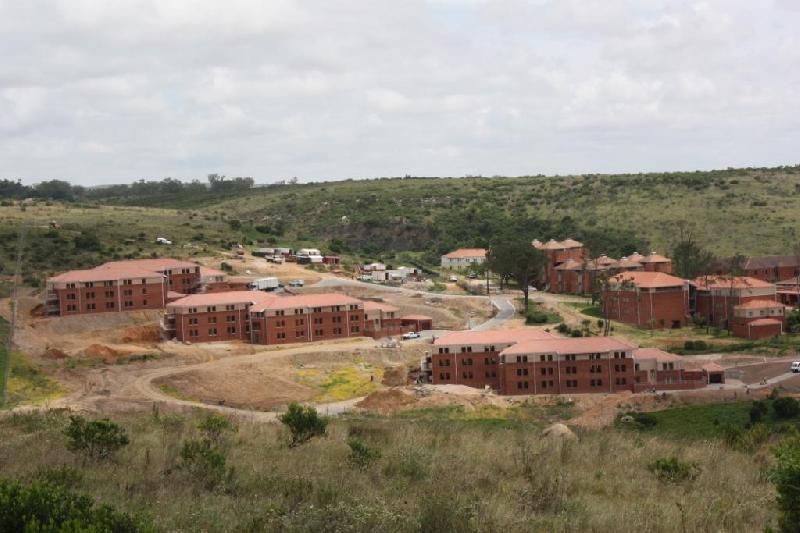
Last year, Rhodes University embarked upon the first phase of a R150-million project to build seven new residences over the next three years. Phase 1 has been completed with three residences being built behind Kimberley Hall, temporarily named Hilltop 1, 2 and 3, which, due to the unique location, enjoys the best view on campus. The development was estimated to cost R57.4 million but some clever thinking has resulted in a significant saving in costs.
Seeing as the university has reached its quota in terms of new student intake, phase two and three of the development have been put on hold until further notice. Dr Iain L’Ange, the director of the Residential Operations Division, says the university’s strategic objective for student housing has more or less been achieved with the completion of the three additional residences, namely, to provide a place in residence for all new first year students without having to restrict senior or returning students’ access to place in residence. This has arisen because Rhodes has decided to cap its growth in student numbers for the moment. He says the reason the new residences have not been named is to give the students who will be living there a chance to participate in the naming debate.
The green approach to the building of the residences was closely monitored by the University’s Safety and Environmental Officer. All three residences make use of heat pumps instead of boilers which results in a between 60 and 80% saving in electricity every month. “As a matter of course, rainwater tanks have also been installed to harvest rainwater,” says Dr L’Ange. There are also motion sensors installed in all ablution areas and passages which turn the lights off when no movement is detected. Dr L’Ange is very pleased with the success of the overall development but says he is particularly thrilled with the new refurbished and extended Kimberley Hall. “It is an innovative and pleasing outcome,” he says which has resulted in a cost saving of around R20 million for the university.
Picture by: Justus Wagener
